AUBURN — Bill and Susan Broadbent have heard all of your clever puns already, thank you very much.
When you own a business that sells edible insects, Susan notes, “the puns fly.” But that’s OK, all the little jokes don’t, ahem, bug the brother-sister team. They’ve grown so used to talking about eating insects that the puns readily hatch from their own mouths before they realize what they’re saying.
“Cricket powder seems to be a lot easier for people to swallow,” Susan Broadbent said during a recent interview, followed by a look that says “I just did it again, didn’t I?”
The Broadbents are the team behind Entosense, home of a large online marketplace at edibleinsects.com for people who like to chow down on crickets, grasshoppers, ants, beetles, scorpions, tarantulas and other critters with lots of legs and plenty of crunch. They even sell (may your gag reflex forgive us) housefly pupae.
It’s easy to make jokes, but when it comes to eating insects, Americans are behind the curve. Insects are a regular source of nutrition in places like China, Brazil, Thailand – which has 20,000 insect farms – and Mexico.
“Mexico actually has over 200 kinds of insects that they eat, including six different kinds of ants,” Bill Broadbent said.
Chef David George Gordon, Seattle-based author of “The Eat-A-Bug Cookbook: 40 Ways to Cook Crickets, Grasshoppers, Ants, Water Bugs, Spiders, Centipedes and Their Kin,” notes that 80 percent of the world’s cultures already eat bugs.
“People need to learn that insects are not the enemy because they’re taught that when they are in school,” Gordon said. “People have an unreasonable fear of insects. People think they’re germy and disgusting and gross, but they’re not.”

Bill Broadbent and his sister, Susan Broadbent, hope to expand their edible-insect business.
According to the United Nation’s Food and Agriculture Organization, with 9 billion people expected to populate the planet by 2050, insects may become an important part of our diet. They contain at least 60 percent protein, meet amino acid requirements for humans, are high in the “good fats,” and rich in micronutrients such as iron, magnesium and zinc. And environmentally speaking, an insect farm uses far fewer resources than a cattle feedlot or pig farm. It takes 2,600 gallons of water to produce one pound of beef, for example, while a pound of crickets consumes less than two cups.
Pepsi CEO Indra Nooyi, speaking to investors on Wall Street last fall, predicted interest in “bug-related stuff” will explode in coming years. Investors are already taking notice. Edible crickets are being farmed in “cricket condos” in Canada and in vacant buildings in Detroit, where the first American insects-as-food conference was held last year.
‘WE COMPARE IT TO SUSHI’
But there’s still that pesky “ick factor” to get past, which is where the Broadbents come in. They season their insect snacks with familiar flavors they hope will entice consumers to give them a try. Think sour cream-and-onion-flavored crickets ($3.95 for a 10-gram sample pack), as well as crickets that are flavored with sriracha, honey mustard or curry. They also sell Chirps – crickets baked into tortilla chips – and the Cricket Crunch Bar ($6.95), crickets covered in chocolate and marketed as “the only candy bar that will make you scream.”
The Broadbents carry a number of products from other companies, but the Entovida line is their own. For that line, they import the flavored insects from Mexico and Thailand and sell them under their own label. They are working with a local chocolatier on a couple products, too, including the Cricket Crunch Bar and milk chocolate-peanut butter cups made with cricket powder. For now, they are not raising any insects for food themselves.
Some insects have a natural flavor and don’t necessarily need seasoning, the Broadbents say. Water scorpions taste like pumpkin seeds (scorpion venom goes inert after the insects die or are cooked), and katydids are reminiscent of pistachios. Maguey worms are naturally sweet. Black ants from Thailand have a strong, citrusy flavor.
Their No. 1 seller – and Bill Broadbent’s favorite – is the chapulina, a grasshopper seasoned with lemon, salt, garlic and chile. It’s a favorite bar snack in Mexico. Broadbent says the grasshoppers taste great in burritos and frittatas.
“We compare it to sushi,” Susan Broadbent said, “because in the ’80s people were really grossed out by sushi, and it wasn’t until a California chef introduced the California roll to make it seem familiar” that American consumers embraced it. “And now between Lewiston-Auburn and Portland, there’s a sushi restaurant on every corner. So we’re hoping it’s going to take that route.”
Bill Broadbent had a screen-printing business and his sister was an artist when they first discovered edible insects. Bill’s 13-year-old son, Sam, asked him one day why people don’t eat bugs. That led the family down a research rabbit hole, and the result was BugsForDinner.com, an informational website. When they started getting phone calls from people asking if they were selling edible insects, Bill Broadbent said he realized there was a wide-open niche waiting to be filled and figured why not fill it himself? In 2015, he and Susan opened Entomarket, their online marketplace on edibleinsects.com. Now, they both work on the business full time, and they hope to hire their first employee later this year.
The business has been profitable from the beginning, and first quarter sales have already tripled over last year, the siblings say, although they declined to give sales figures because they are in talks with investors. Gordon describes them as “major players” in the world of edible insects.
BUGS. IT’S WHAT’S FOR DINNER
When it comes to eating insects, the family practices what it preaches.
Sam Broadbent, now 15, eats mostly crickets, and he eats them daily, usually sprinkled over salad. His sister, 13-year-old Julia, says her favorite snack is the chrysalis of the silkworm, re-named “silkworm dolls” by the Broadbents because they look like little dolls.
“I just eat those out of the bag like chips, almost,” she said. “And I put the mealworms in macaroni and cheese, and I put it on my pizza at school.”
Julia Broadbent says at first, her friends were “grossed out,” but then it became “like a dare – like, ‘I dare you to eat a bug.’ ”

Thirteen-year-old Julia Broadbent snacks on mealworms.
According to Bill Broadbent, children are much more likely to give bugs a chance than adults: 70 to 80 percent of them will readily down a grasshopper or cricket, he said, compared with 30 to 40 percent of adults. Last summer, local kids got to sample an insect or two at Bug Fest, a special event held at the Children’s Museum & Theatre of Maine.
Who are the Broadbents’ customers? They sell their products worldwide, but 80 to 90 percent of sales are within the United States. Many customers are health-conscious athletes, such as body builders and runners, they say. Many Latino and Asian-American consumers scarf up chapulines and silkworm pupae. Schools, camps and people interested in alternative foods or the environment are also high on the list. Churches order a lot of locusts, presumably to make stories of Biblical plagues come alive.
Then there are the “preppers,” the Broadbents say – people who are convinced the apocalypse is on our doorstep and that the world will be fighting over its food resources. Crickets and grasshoppers take up less shelf space than a chicken or a whole hog, after all, and have a shelf life of at least two to three years.
And every year, the Broadbents supply Google’s “bug conference” with insects – a conference about software bugs, not creepy crawlies – for a tongue-in-cheek “bug dinner.”
Even some vegetarians and vegans appreciate edible insects because they are raised humanely, Broadbent said.
“The cricket lives its whole life,” he said. “The way they harvest it is to put it into a cooler, cool it down to a point where they’re asleep, and then that kills them. So it’s just like winter coming on.”
Crickets are known in the industry as “the gateway bug,” and can be purchased in what is perhaps insects’ most palatable form – cricket flour, which looks like ground cinnamon and can be used in pancakes, muffins, chili and many other recipes. Buy a pound of cricket powder from the Broadbents, and they’ll throw in a shaker so you can get a boost of cricket protein on any dish you want.
BIG BUG PLANS
The Broadbents have big plans. They intend to travel to Asia and Mexico to set up better channels for importing insects. If scientists suddenly discover that eating crickets helps ease arthritis symptoms, say, they want to be able to meet demand. Also, the Broadbents, who work out of their home – the business area looks like a storeroom with shelves of stacked edible insect products – hope to expand into a larger space and to do a little experimental farming one day. If you feed a cricket honey, will it turn out sweeter? “We’ve talked about using chile to see if we can get a spicy cricket,” he said.
They’d like to connect to Maine’s organic farmers. Maybe the farmers could make extra money selling the carrot tops, potato tops and other food waste they’re now composting to the edible insect industry for cricket food.
And they’d like to connect to local restaurants, too. Chefs around the country are beginning to hold bug dinners, such as one in January, where several chefs in Denver prepared a $75 five-course “bug banquet” that attracted 50 people.
“The chefs totally got into it,” cookbook author Gordon said. “They took some of my rudimentary recipes and made them really spectacular.”
Next to getting over a fear of eating bugs, the biggest hurdle insect cuisine faces is that the public must learn how to cook them, Gordon said.
“The more world-class chefs who are experimenting with insects – and there are several who are – are paving the way for broader acceptance,” he said. “People talk about how great (edible insects) are for the environment, and it is indeed good for the planet to be eating bugs as opposed to eating cattle, but if they don’t taste good, who cares?”
Says Bill Broadbent: “We always joke that the hardest bug to eat is your first one.”
Send questions/comments to the editors.


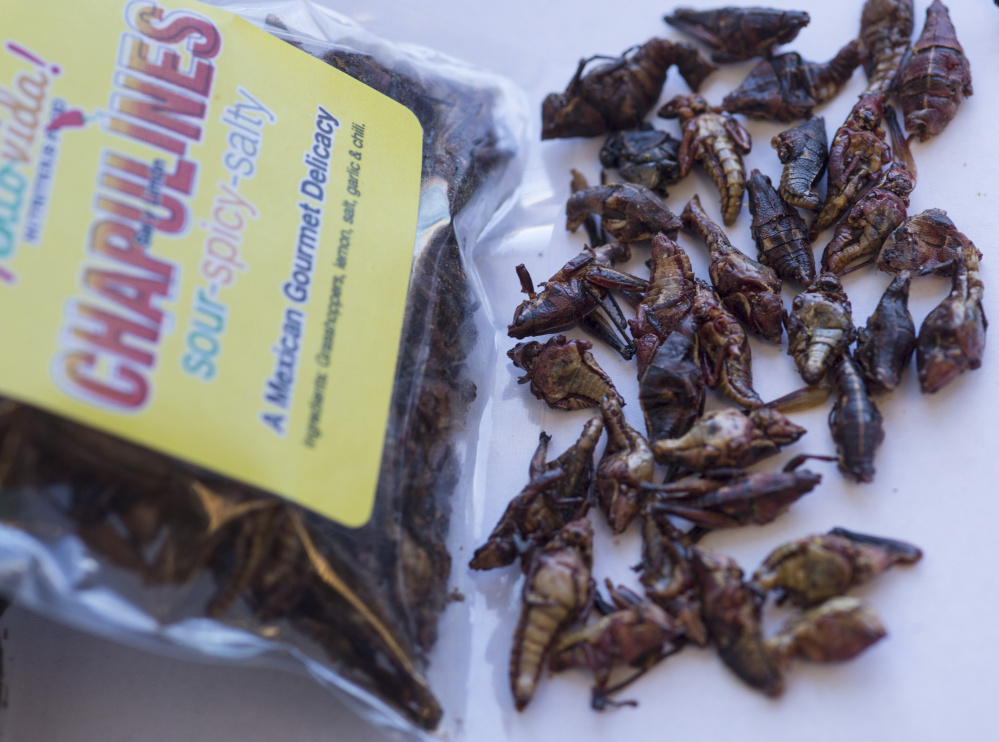
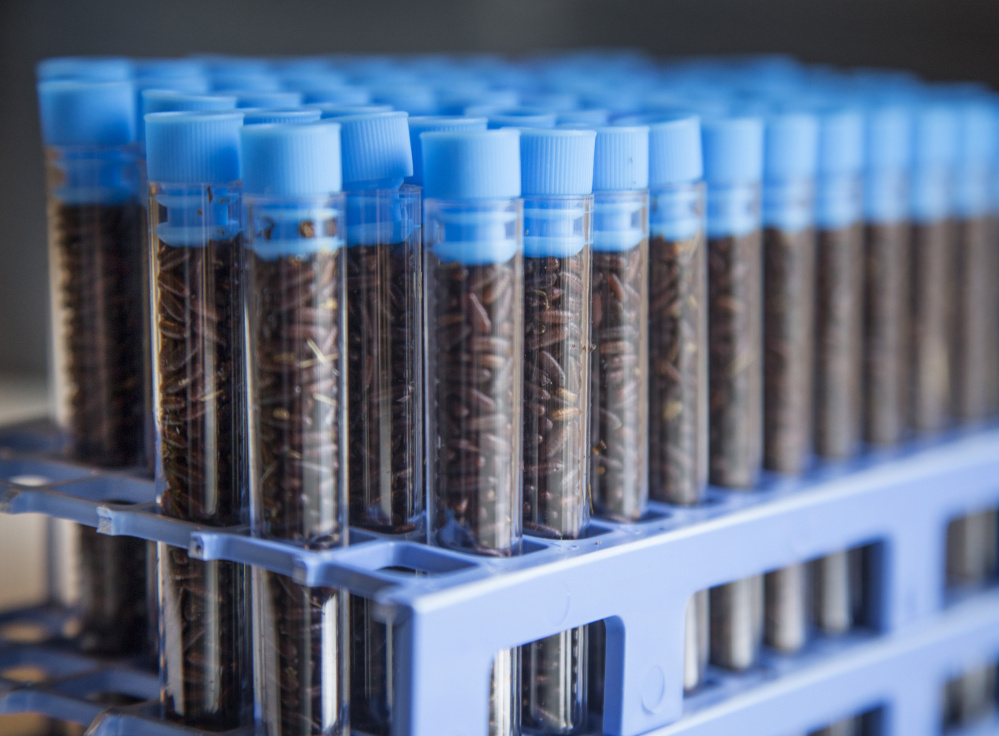
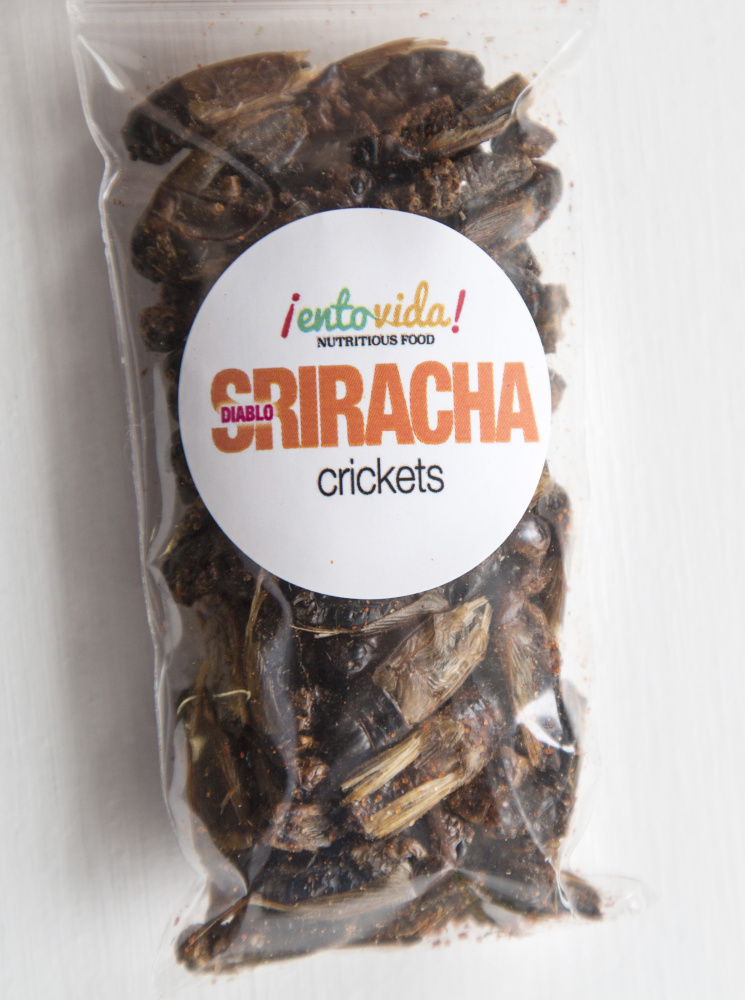
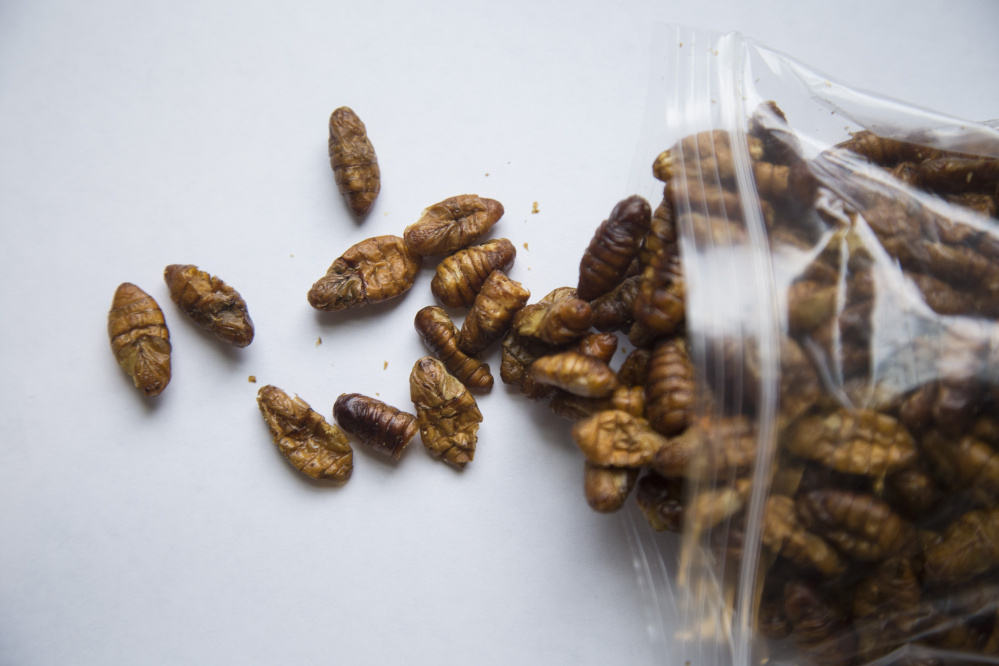
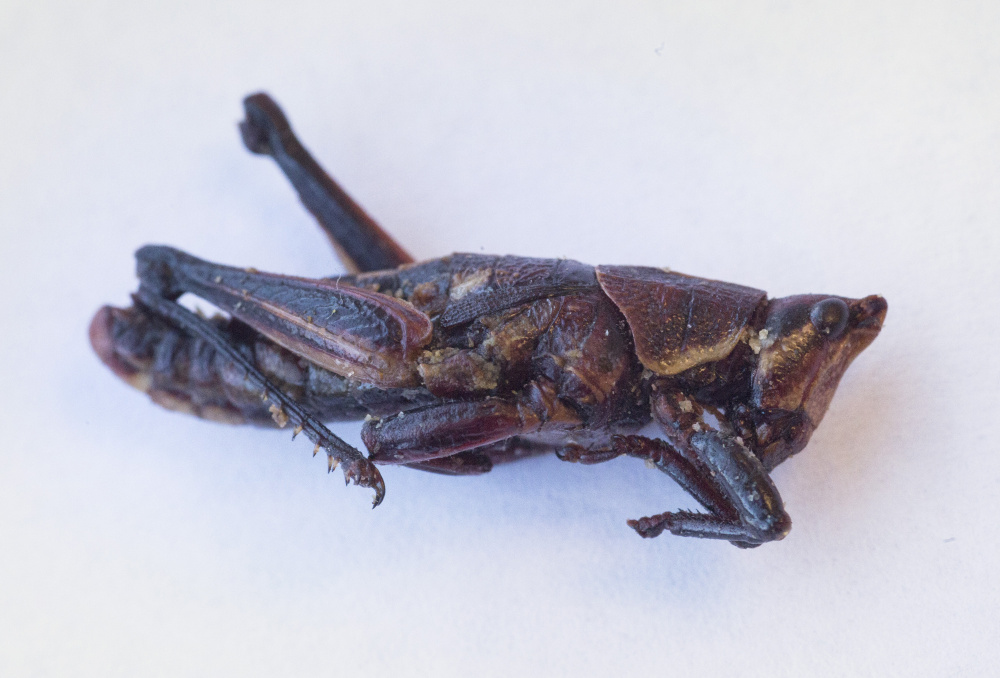
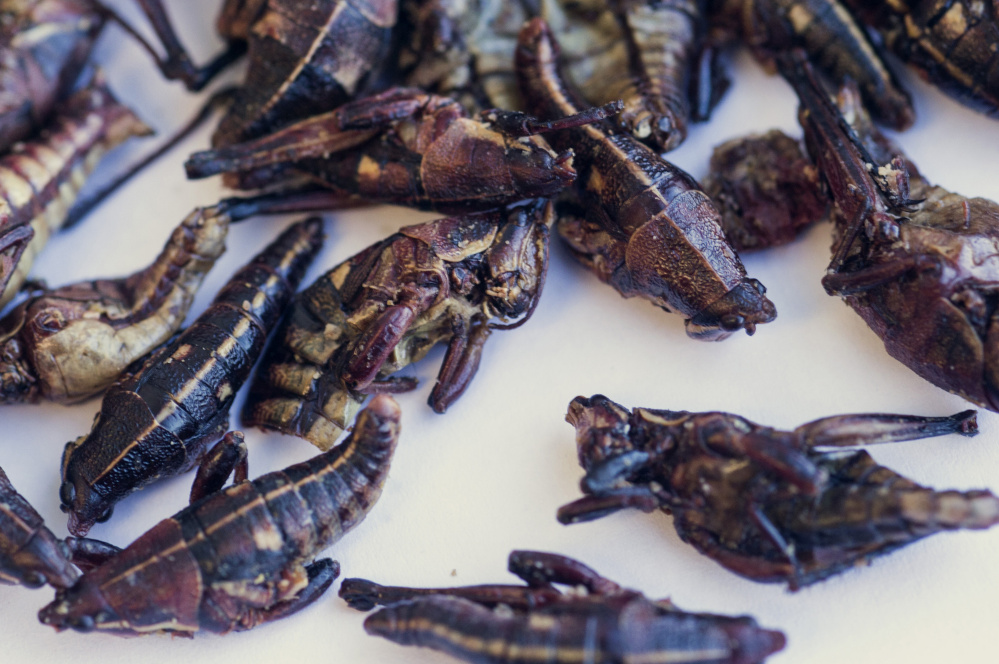

Success. Please wait for the page to reload. If the page does not reload within 5 seconds, please refresh the page.
Enter your email and password to access comments.
Hi, to comment on stories you must . This profile is in addition to your subscription and website login.
Already have a commenting profile? .
Invalid username/password.
Please check your email to confirm and complete your registration.
Only subscribers are eligible to post comments. Please subscribe or login first for digital access. Here’s why.
Use the form below to reset your password. When you've submitted your account email, we will send an email with a reset code.